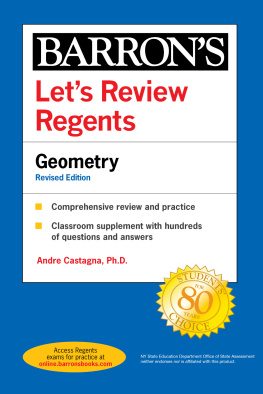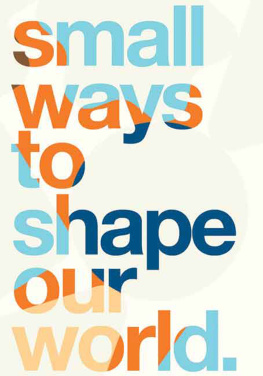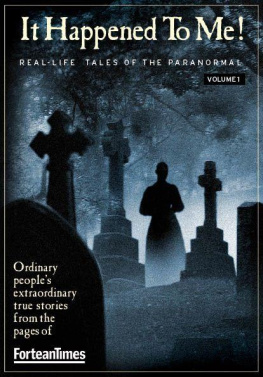the relative sizes of the Moon and
the Earth defined from a pentagon
First published 2001
Revised and updated edition 2012
eBook edition Wooden Books Ltd 2018
Published by Wooden Books Ltd.
Glastonbury, Somerset.
British Library Cataloguing in Publication Data
Lundy, M. H.
Sacred Geometry
A CIP catalogue record for this book
may be obtained from the British Library.
eBook ISBN: 978-1-912706-02-0
Physical ISBN: 978-1-904263-04-3
All rights reserved.
For permission to reproduce any part of this
geometrical gem please contact the publishers.
Designed and typeset in Glastonbury, UK.
Converted and optimised for digital display
by CPI Anthony Rowe, Chippenham, UK.
SACRED
GEOMETRY
written & illustrated by
Miranda Lundy
To the designers of the future, young and old.
I recommend two other books in this series: Platonic and Archimedean Solids
by Daud Sutton, which deals with the all-important third dimension, and Ruler and
Compass by Andrew Sutton, which covers ruler and compass constructions.
My sincere thanks to John Martineau, and to my teachers Prof. Keith Critchlow,
John Michell, Dr. Khaled Azzam, Paul Marchant, Robin Heath, Michael Glickman,
Dr. Stephan Ren, Tony Ashton and Buckminster Fuller.
CONTENTS
Introduction
Sacred Geometry charts the unfolding of number in space and differs from mundane geometry in the sense that its moves, concepts and products are regarded as having symbolic value and meaning. Thus, like a good melody, the study and practice of geometry can facilitate the evolution of the soul. As we shall see, the basic journey is from the single point, into the line, out to the plane, through to the third dimension and beyond, eventually returning to the point again, watching what happens on the way.
These pages cover the elements of two-dimensional geometrythe unfolding of number on a flat surface. The three-dimensional geometrical story is told in another book in this series. The material is this book has been used for a very long time indeed as one introduction to metaphysics. Like the elements of its sister subject, music, it is an aspect of revelation, a bright indisputable shadow of Reality and a creation myth in itself.
Number, Music, Geometry and the study of patterns in the Heavens are the four great Liberal Arts of the ancient world dealing with quanta, or whole numbers. These simple universal languages are as relevant today as they have always been, and may be found in all known sciences and cultures without disagreement. Just above the entrance to Platos Academy was a sign: Let none ignorant of geometry enter here. So lets do some research.
Point, Line and Plane
none, one and two dimensions
Begin with a sheet of paper. The point is the first thing that can be done. It is without dimension and is not in space. Without an inside or an outside, the point is the source for all which now follows. The point is represented ( below ) as a small circular dot.
The first dimension, the line, comes into being as the One emerges into two principles, active and passive ( below right ). The point chooses somewhere outside of itself, a direction. Separation has occurred and the line comes into being. A line has no thickness, and it is sometimes said that a line has no end.
Three ways now become apparent ( opposite ):
i) With one end of the line stationary, or passive, the other is free to rotate and describe a circle, representing Heaven.
ii) The active point can move to a third position equidistant from the other two, thus describing an equilateral triangle.
iii) The line can produce another which moves away until distances are equal to form a square, representing Earth.
Three forms, circle, triangle and square have manifested. All are rich in meaning. Our journey has begun.
rotate a line
create a circle
move a vertex
make a triangle
translate a line
produce a square
Sphere, Tetrahedron & Cube
from two to three dimensions
Although this book concerns itself primarily with the plane, the three ways are here taken one step further:
i) The circle spins to become a sphere. Something circular remains essentially circular ( top row opposite ).
ii) The triangle produces a fourth point at an equal distance from the other three to produce a tetrahedron. One equilateral triangle has made three more ( central row opposite ).
iii) The square lifts a second square away from itself until another four squares are formed and a cube is created (lower row opposite).
Notice how the essential division into circularity, triangularity and squareness from the previous page is preserved.
The sphere is a symbol of the cosmos. Very large and very small things tend to be spherical. Einstein discovered that a point in four dimensions (i.e. you here and now) is a sphere expanding at the speed of light. All we can see of the entire universe is inside an spherical event-horizon. The cube represents the Earth.
The sphere possesses the smallest surface area for its volume of any possible three-dimensional solid whereas, amongst regular solids, the tetrahedron is the opposite.
A tetrahedron is in fact hiding in a cubeif you draw a single diagonal line on every face of a cube so that they join at the corners, you will have defined the edges of a tetrahedron. Try it!
rotate a circle
create a sphere
move a vertex
make a tetrahedron
translate a square
produce a cube
One, Two & Three
playing with circles
Get a ruler, compasses, something to draw with and something to draw on. Draw a horizontal line across the page. Open the compasses and place the point on the line. Draw a circle ( top ).
Where the circle has cut the line, place the point and draw another circle, the same size as the first. When one circle is drawn over another like this so that their rims pass through each others centres, then an almond shape, the vesica piscis, literally fishs bladder, is formed. It is one of the first things that circles can do. Christ is often depicted inside a vesica. Two equilateral triangles have been defined ( opposite centre ).
If a third circle is added on the other side of the forming circle then all six points of a perfect hexagon are defined. Otherwise another circle can be drawn from the top or bottom of the vesica to produce the triangular figure below.
Circles thus effortlessly produce perfect triangles and hexagons.
Six Around One
or twelve or even eighteen
The six points of the hexagon give rise to the flower-like pattern shown below. Alternatively it can be drawn by walking a circle around itselfsomething most children have done at school, whether under instruction or just playing with compasses.
We are now seeking the lower diagram opposite, and need the centres of the six outer circles. One way is to lightly draw the six circles shown dashed above, otherwise we can draw straight lines as shown in the lower diagram. Both ways work.
We can now see that six circles fit around one. We can push oranges, wine-glasses or tennis balls together to see it, yet it is extraordinary really. Six around one is a theme which the Old Testament of the Bible opens on, with the six days of work and the seventh day of rest. There is indeed something very sixy about circles.
Twelve Around One
how to draw a dodecagon
As one produces six, so six produces twelve. The arms of the six-pointed star extend to intersect the outer rims of the six circles to form a perfect overall division of space into twelve parts ( shown opposite ). The perfect twelve-sided polygon is called a dodecagon, which means twelve sided!









